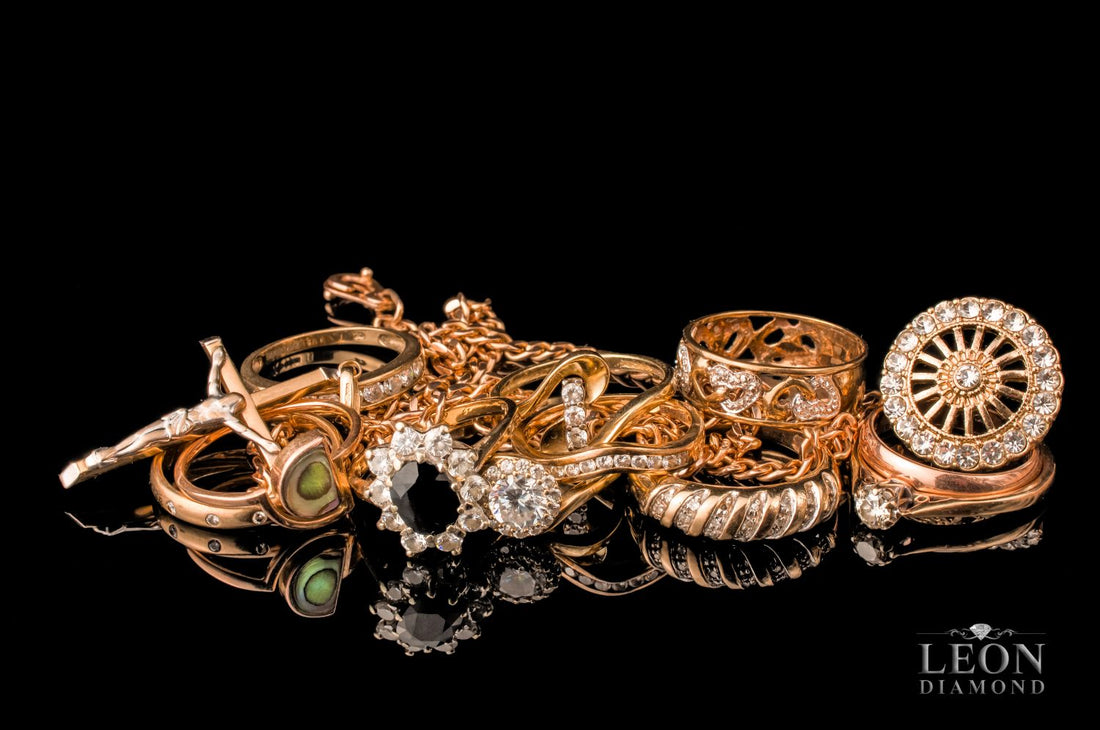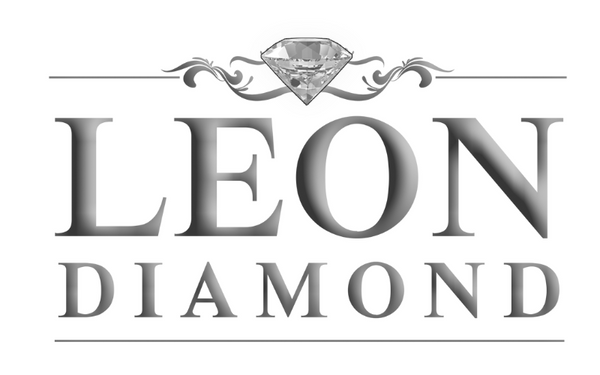
How to Mix Metals: The New Jewelry Style Rules
Share
Mixing metals in jewelry has become one of the hottest trends in recent years. Once considered a fashion faux pas, blending metals is now embraced by jewelry lovers who want to express their individuality. Gone are the days when people thought they had to match every metal perfectly. Today, mixing metals is all about creating a unique look that complements personal style. Whether it’s stacking rings, pairing necklaces, or adding multiple bracelets, mixing metals can give your jewelry collection a modern and sophisticated twist.
But how do you mix metals successfully without looking like you’ve just thrown on whatever you found? Here’s your comprehensive guide to mixing metals in a way that’s stylish, intentional, and, above all, cohesive.
Understanding the Basics of Mixing Metals
When it comes to mixing metals, the first step is to understand the different types of metals that are commonly used in jewelry. These include gold (in yellow, white, and rose varieties), platinum, sterling silver, titanium, tungsten, and even alternative metals like carbon fiber and meteorite. Each metal has its own distinct look and feel, and the goal is to create combinations that complement each other while adding visual interest.
Common metals used in jewelry:
- Yellow Gold: A classic choice with a warm tone.
- White Gold: Sleek and modern, often paired with diamonds.
- Rose Gold: A romantic hue, trending for its unique pinkish tone.
- Platinum: Durable, hypoallergenic, and premium.
- Silver: Light, reflective, and versatile.
- Titanium: Lightweight, strong, and corrosion-resistant.
- Tungsten: Extremely durable and scratch-resistant.
- Alternative metals (Meteorite, Carbon Fiber, etc.): For an ultra-modern and bold touch.
It’s important to note that mixing metals isn’t about just picking two random pieces that happen to be different metals. The best mixed-metal jewelry designs involve careful thought about how metals work together, considering factors such as color, texture, and finish. Understanding these basics sets the stage for creating jewelry pieces that are both bold and stylish.
Starting with a Common Element

One of the easiest ways to begin mixing metals is to start with a common element. A shared color, texture, or style can provide a sense of continuity between pieces, even when they are made from different metals. For instance, if your engagement ring is crafted from yellow gold, pairing it with a white gold or platinum wedding band creates a harmonious and timeless look. Similarly, if you already wear a mix of silver and gold rings, adding a piece with a similar design or finish will make the combination feel intentional, not chaotic.
For those new to mixing metals, beginning with a common thread helps to ensure that the pieces don’t appear too disjointed. Whether it’s the same tone of gold or a similar polished finish, finding a shared characteristic can make it easier to mix and match.
Combining Warm and Cool Metals
An essential principle in mixing metals is pairing warm-toned metals (such as yellow gold or rose gold) with cool-toned metals (like platinum, white gold, or silver). This strategy creates a balanced contrast that is visually striking without being overpowering. Warm metals have an inviting, rich tone, while cool metals exude a sleek, modern vibe. The combination of these two distinct temperatures of metal offers a sophisticated duality.
Some great combinations include:
- Rose gold and platinum: A romantic and elegant contrast.
- Yellow gold and silver: A timeless and classic pairing.
- White gold and titanium: Clean, modern, and sleek.
If you love the warmth of rose gold but want to add an element of modernity, pairing a rose gold ring with a platinum bracelet could create a striking yet balanced look. Similarly, mixing a cool-toned silver necklace with a warm gold bracelet can add complexity to your overall ensemble without clashing. The key is to avoid having too many warm or cool pieces in one look, as this can either overwhelm the eye or make the design feel too uniform.
Playing with Different Textures and Finishes
One of the most exciting aspects of mixing metals is experimenting with different textures and finishes. While you may be pairing different metals, the textures can make the pieces feel more cohesive and interesting. Think of textures as the final layer that can make or break your mixed-metal look.
Textural variations include:
- Polished: A sleek, shiny finish that reflects light beautifully.
- Matte: A soft, subtle finish that gives a modern feel.
- Hammered: A textured finish that adds depth and visual interest.
- Brushed: A slightly worn, more rustic look.
- Satin: Smooth but with a soft glow, perfect for a subtle touch.
Consider pairing a brushed matte gold bracelet with a polished silver ring for contrast, or try a hammered platinum necklace with a shiny yellow gold bangle. The juxtaposition of textures creates depth, which is essential in mixed-metal jewelry. A piece with a smooth finish next to one with a hammered, rustic texture adds visual interest and prevents the combination from feeling flat.
Focusing on Proportions

When mixing metals, the proportion of the metals used is just as important as the actual combination. Different metals have distinct weights, thicknesses, and visual impacts, so balancing these proportions is crucial to making sure your jewelry pieces look cohesive.
Tips for maintaining balance:
- Combine delicate with bold: A thick tungsten ring can pair well with a thin platinum bracelet.
- Stack metals with contrasting sizes: A large gold statement ring can be paired with smaller silver stackable rings.
- Consider the weight: Heavier metals like titanium can balance lighter pieces like gold.
If you have a thick, bold ring made of one metal, it’s often best to balance it with a more delicate piece in another metal. For example, pairing a thick yellow gold wedding band with a thinner platinum or silver stackable ring can provide a striking yet well-balanced look. Similarly, when stacking bracelets, mixing heavier metals like tungsten with lighter options like titanium or silver can help create a layered look that’s both balanced and sophisticated.
Choosing a Focal Point
When mixing metals, it's essential to choose a focal point; this is the piece that stands out the most in your ensemble. By selecting one standout piece, you give the rest of your mixed-metal jewelry the opportunity to serve as supporting elements, allowing the focal point to shine.
Examples of focal point pieces:
- A bold engagement ring: The centerpiece of your look.
- A statement necklace: Paired with smaller, simpler pieces.
- A standout bracelet: With complementary rings or earrings.
For example, if you wear a bold platinum ring, you might want to pair it with a more subtle gold bracelet or a thin silver necklace. The platinum ring serves as the focal point, while the other pieces enhance the overall look without competing for attention. By selecting one key piece to be your statement piece, you ensure that your mix of metals feels cohesive rather than cluttered.
Mixing Metals Across Different Pieces
Mixing metals doesn’t just apply to a single piece of jewelry it can be spread across your entire jewelry collection. In fact, mixing metals in different pieces can add variety and versatility to your jewelry style. For instance, you could pair a platinum necklace with a set of yellow gold earrings, or stack silver and gold bracelets for a balanced, chic look.
When combining metals across different pieces, it’s essential to maintain a sense of cohesion by focusing on the same style or theme. If your engagement ring features a modern minimalist design, your wedding band might reflect the same aesthetic but in a different metal. Similarly, you might prefer a more vintage feel, where mixing antique gold and silver elements adds to the charm and personality of your look.
Reflecting Your Personal Style
As with any jewelry choice, mixing metals should reflect your personal style. Jewelry is an expression of who you are, so it’s important to wear pieces that resonate with you. If you prefer bolder statements, feel free to stack multiple rings in different metals or wear a mixed-metal necklace that catches the eye. If your style is more subtle, you can pair two-toned rings or mix a few thin metal bangles.
Whether you lean toward bold contrasts or prefer subtle pairings, the way you mix metals should reflect what makes you feel confident and stylish. There’s no “right” or “wrong” way to mix metals, just choose pieces that speak to you.
Keep It Simple: Avoid Overdoing It

While mixing metals can be fun, it’s important not to overdo it. Too many mixed metals in one look can overwhelm your outfit and take away from the impact of your jewelry. Limit yourself to two or three metals to keep your look polished and purposeful.
How to keep it simple:
- Stick to two or three metals: More than this can overwhelm the look.
- Combine a bold piece with subtle ones: Focus on one key piece to draw attention.
- Consider texture over color: Mixing metals in similar tones but different textures is a great way to keep it balanced.
If you’re just starting to experiment with mixing metals, try to keep it simple at first. For example, combine a silver bracelet with a gold ring and a tennis necklace. This combination will allow the metals to complement each other without competing for attention. Once you become more comfortable with mixing metals, you can explore more complex combinations.
Frequently Asked Questions
Is it fashionable to mix different metal colors in jewelry today?
Yes, mixing metals like gold, silver, and rose gold is now a popular and stylish trend. What was once considered a fashion faux pas is widely embraced, allowing for more creative and personalized jewelry looks.
What’s the best way to start mixing metals if I’m new to the trend?
Begin with a base or dominant metal-such as your favorite watch or a statement necklace-and add accent pieces in a contrasting metal. This creates a cohesive look and makes the styling feel intentional.
How can I make mixed metals look harmonious rather than mismatched?
Use a “bridging” piece that combines multiple metals, like a two-tone watch or a mixed-metal necklace. You can also unify the look with common elements like gemstones (diamonds or pearls) or by keeping the style and finish of your pieces similar.
Are there tips for balancing warm and cool metal tones?
Absolutely. Pair warm tones (yellow gold, rose gold, copper) with cool tones (silver, platinum, white gold) for a striking effect, but keep the proportions balanced. For example, use one as the main color and the other as an accent to avoid visual clutter.
5. What are some easy ways to mix metals in everyday jewelry styling?
Try stacking rings of different metals, layering gold and silver necklaces or bracelets, or mixing and matching earrings if you have multiple piercings. Don’t be afraid to experiment, but limit yourself to two or three metals for a polished look.
Get Creative with Your Jewelry Mix
The beauty of mixing metals is that it allows you to express your creativity. Don’t be afraid to experiment with different combinations, styles, and textures. Jewelry should be fun and personal, so let your pieces reflect your unique taste. Whether you’re matching metals to your mood, the season, or the occasion, mixing metals gives you endless opportunities to play with contrasts, finishes, and layers.
In conclusion, mixing metals is a modern jewelry trend that provides endless opportunities for creativity and self-expression. By understanding the basics of metal combinations, playing with textures and finishes, and focusing on proportion, you can create a jewelry collection that’s both cohesive and unique. Let your mixed-metal pieces tell your story, and don’t be afraid to experiment with new combinations to elevate your style.
Leon Diamond offers an array of mixed-metal rings, bracelets, necklaces, and more. Browse through our collection today to find the perfect combination that reflects your personal style.
